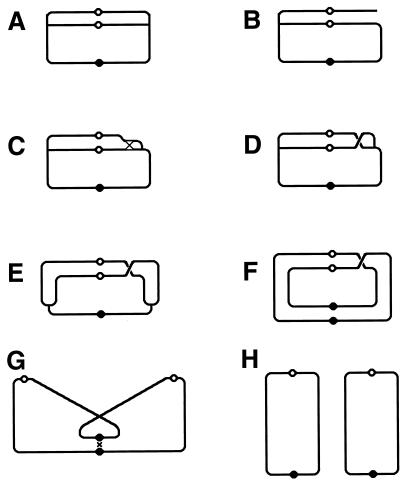FIG. 29.
XerCD-dif site-specific recombination ensures chromosome monomerization in E. coli. The chromosome is shown as a rectangle with rounded corners, with the thick single line representing duplex DNA; replication origins are shown as small open circles at the top of the chromosome, and the replication terminus is represented by a small solid circle at the bottom of the chromosome. (A) A chromosome replicating in theta mode. (B) One of the replication forks has disintegrated. (C) The replication fork is reassembled by recombinational repair, resulting in a Holliday junction. (D) The Holliday junction is resolved, generating a crossover. (E and F) Completion of the chromosomal replication results in a dimer chromosome. (G and H) Segregation of the daughter nucleoids translocates the crossover to the terminus region, where it is resolved, permitting separation of the daughter chromosomes from each other.

